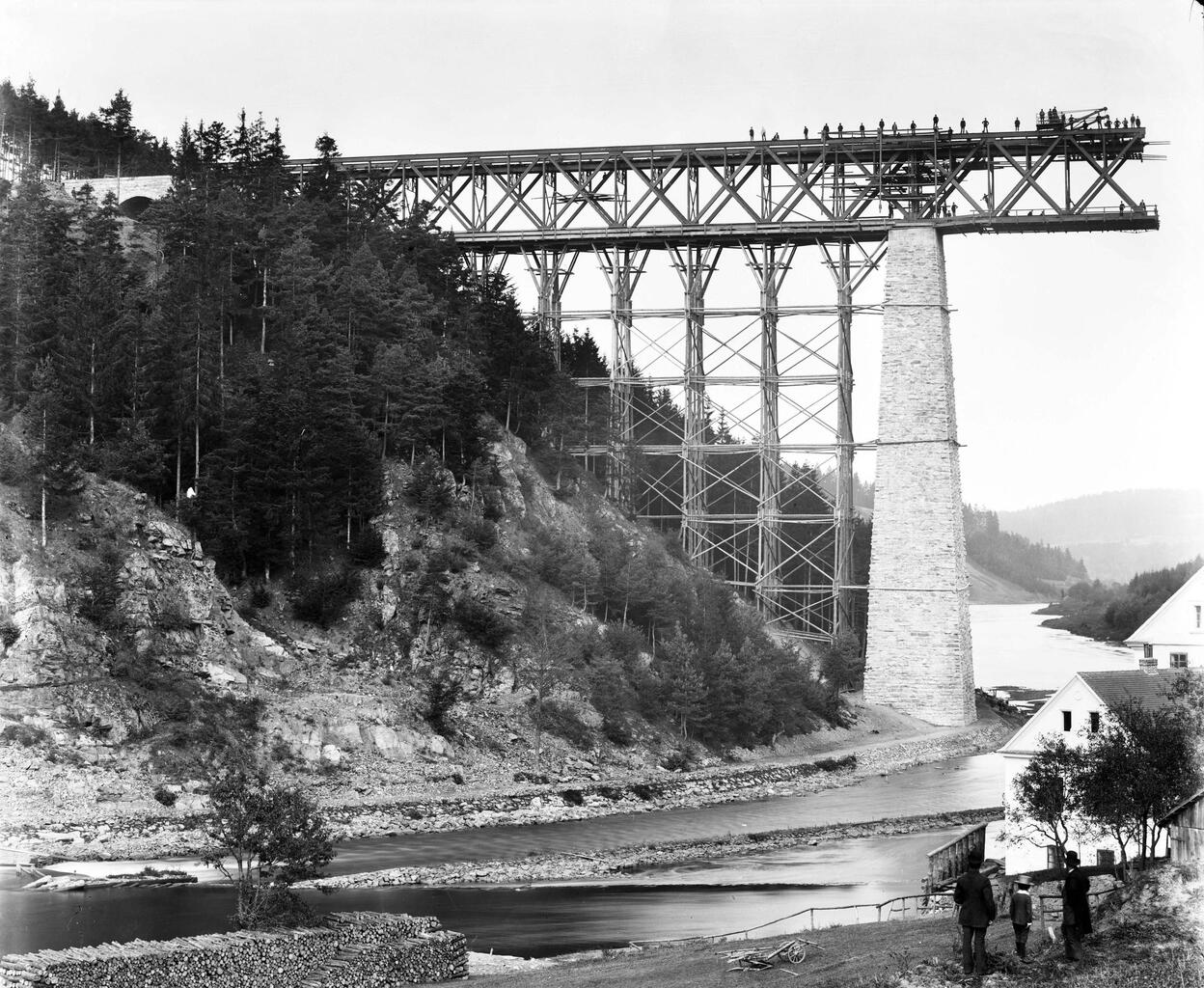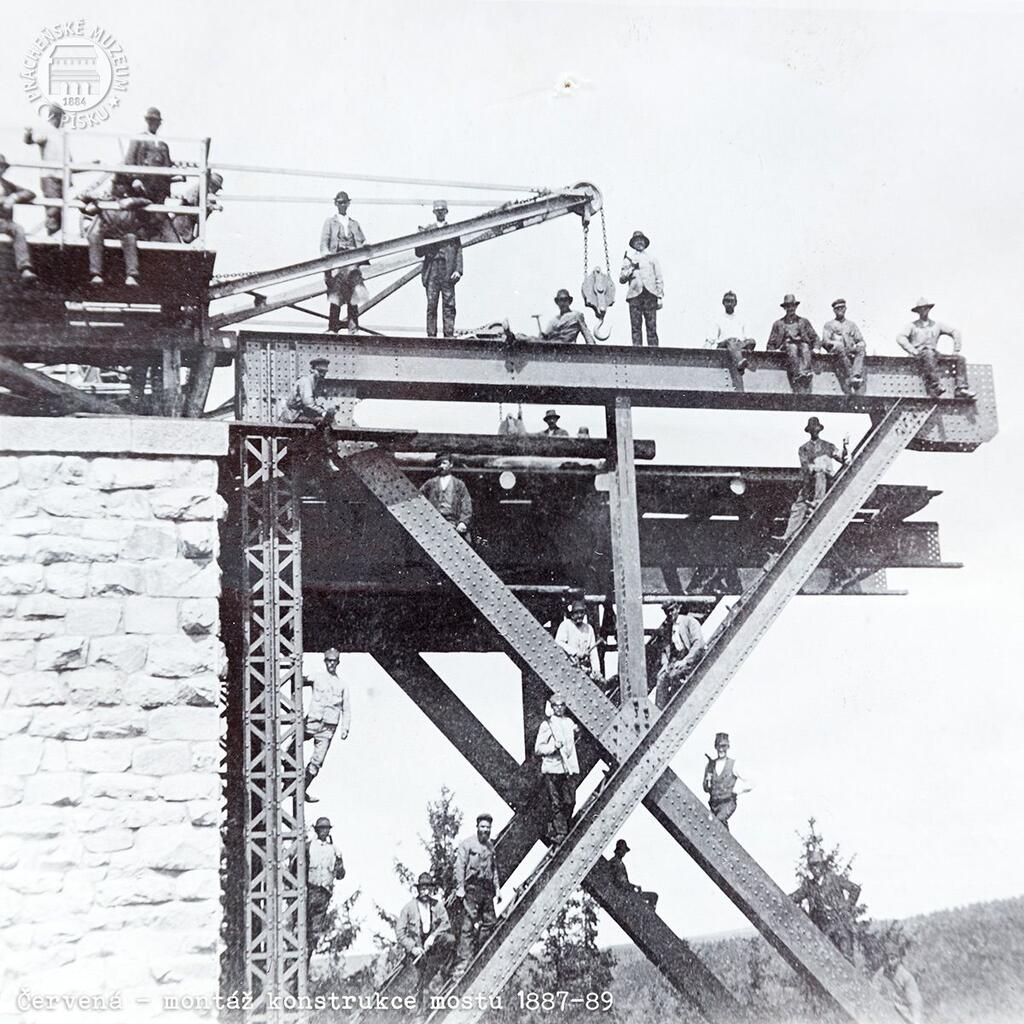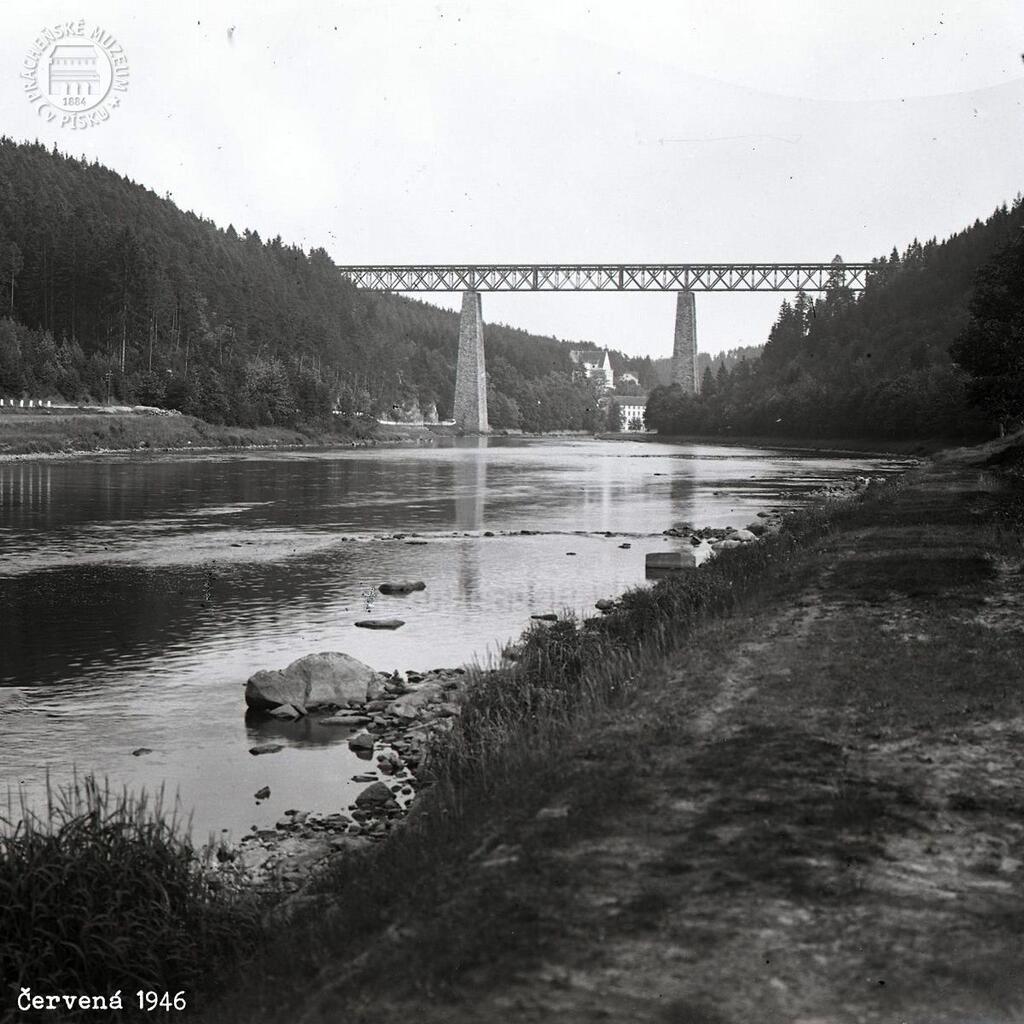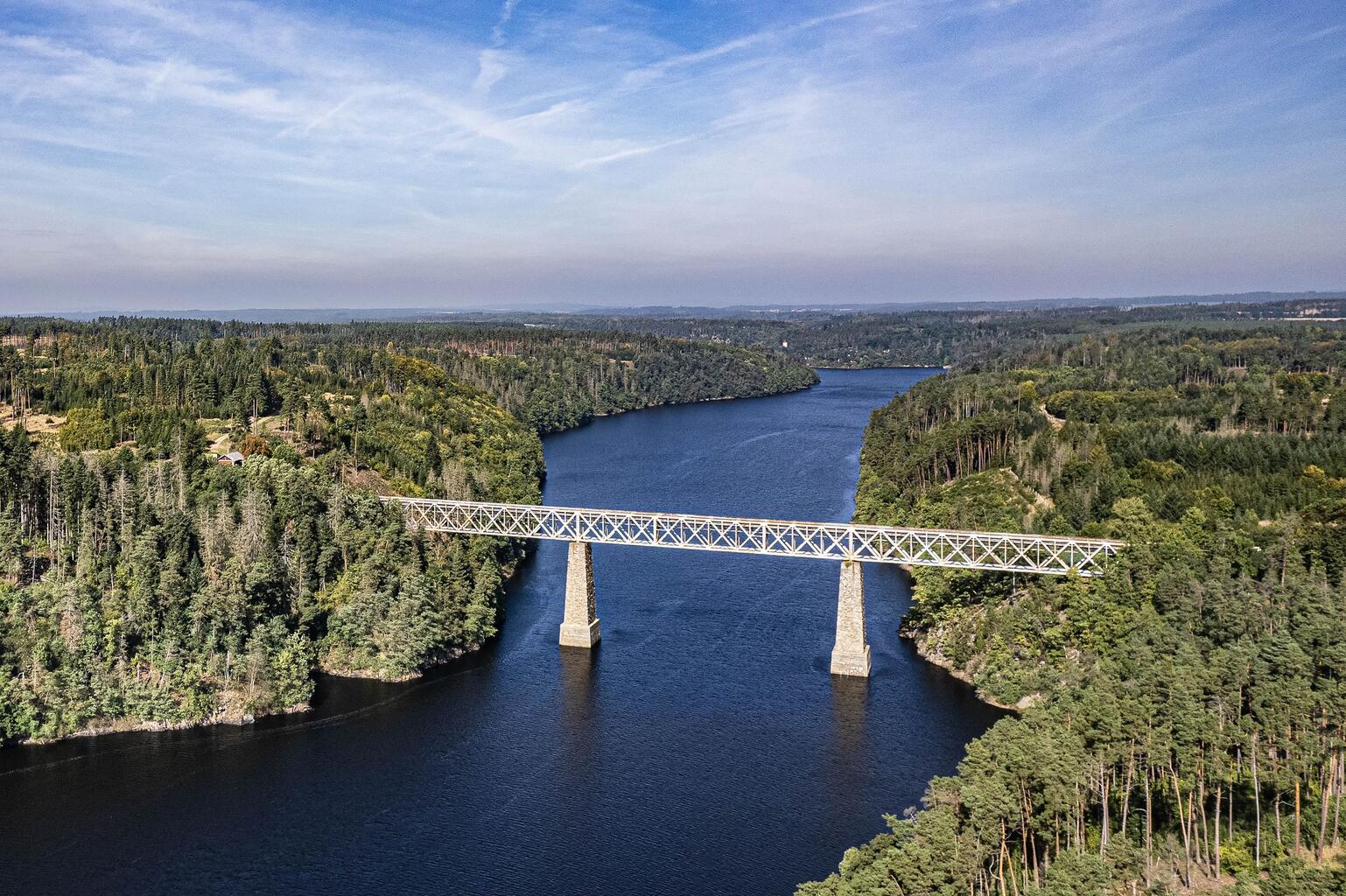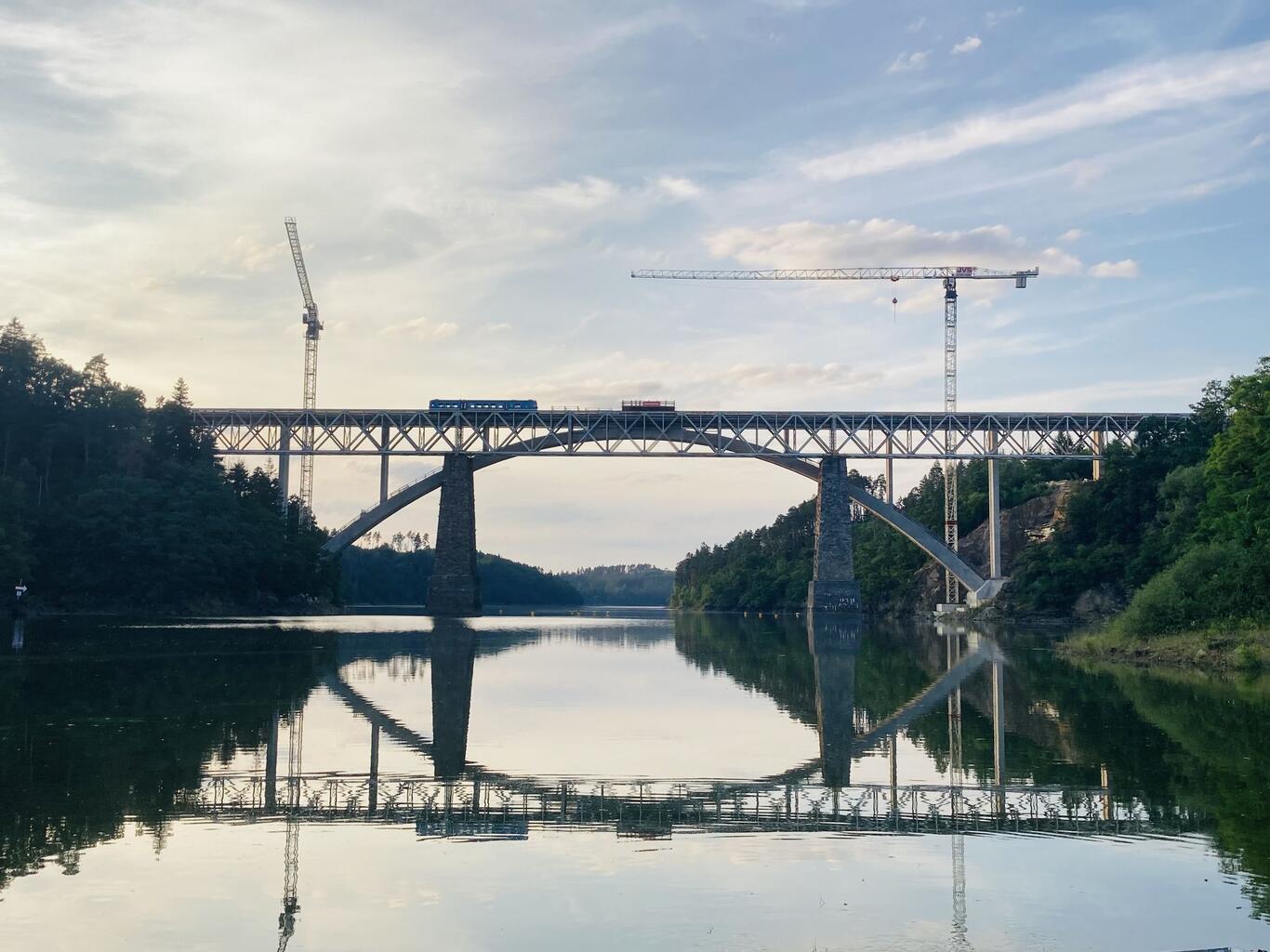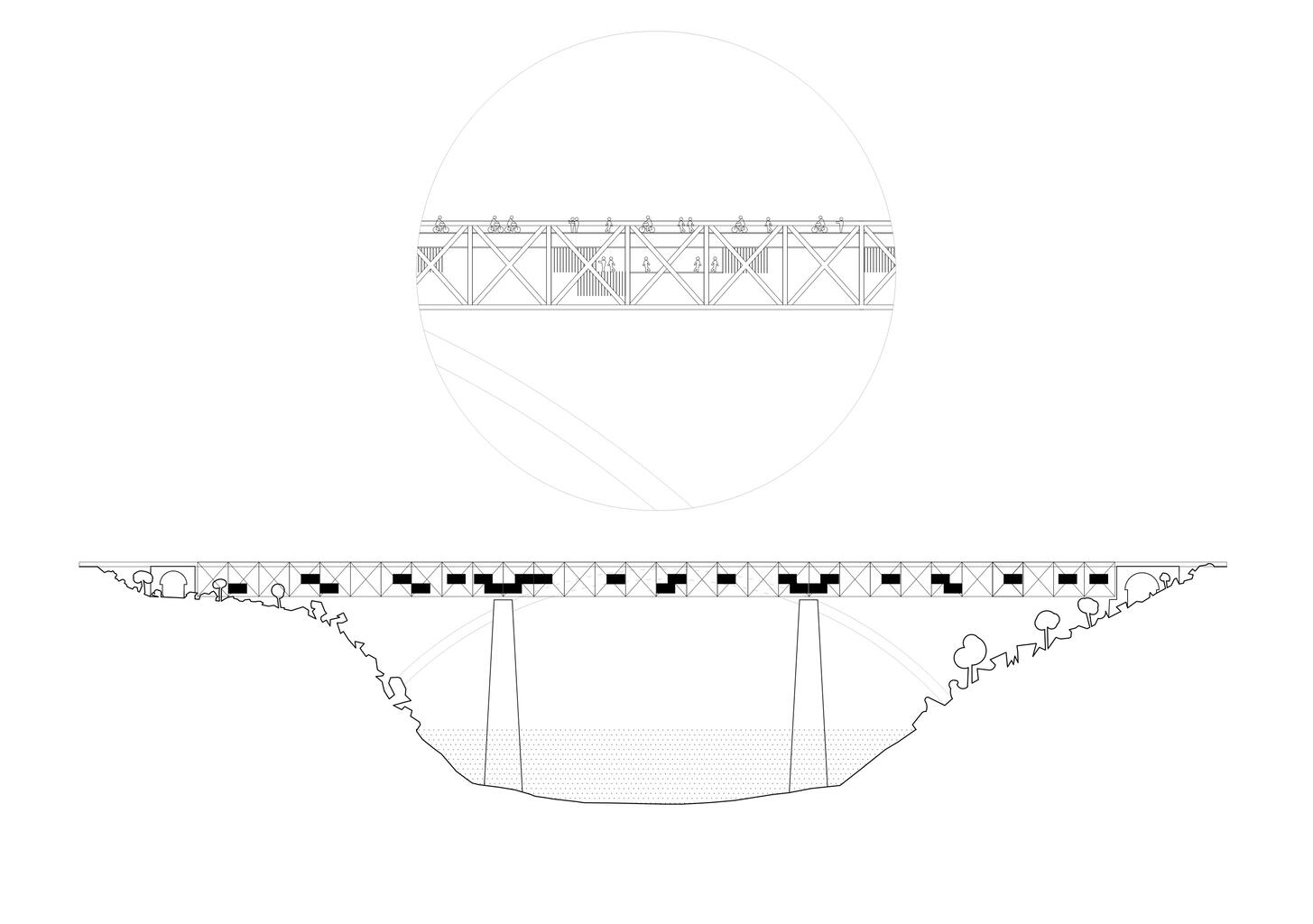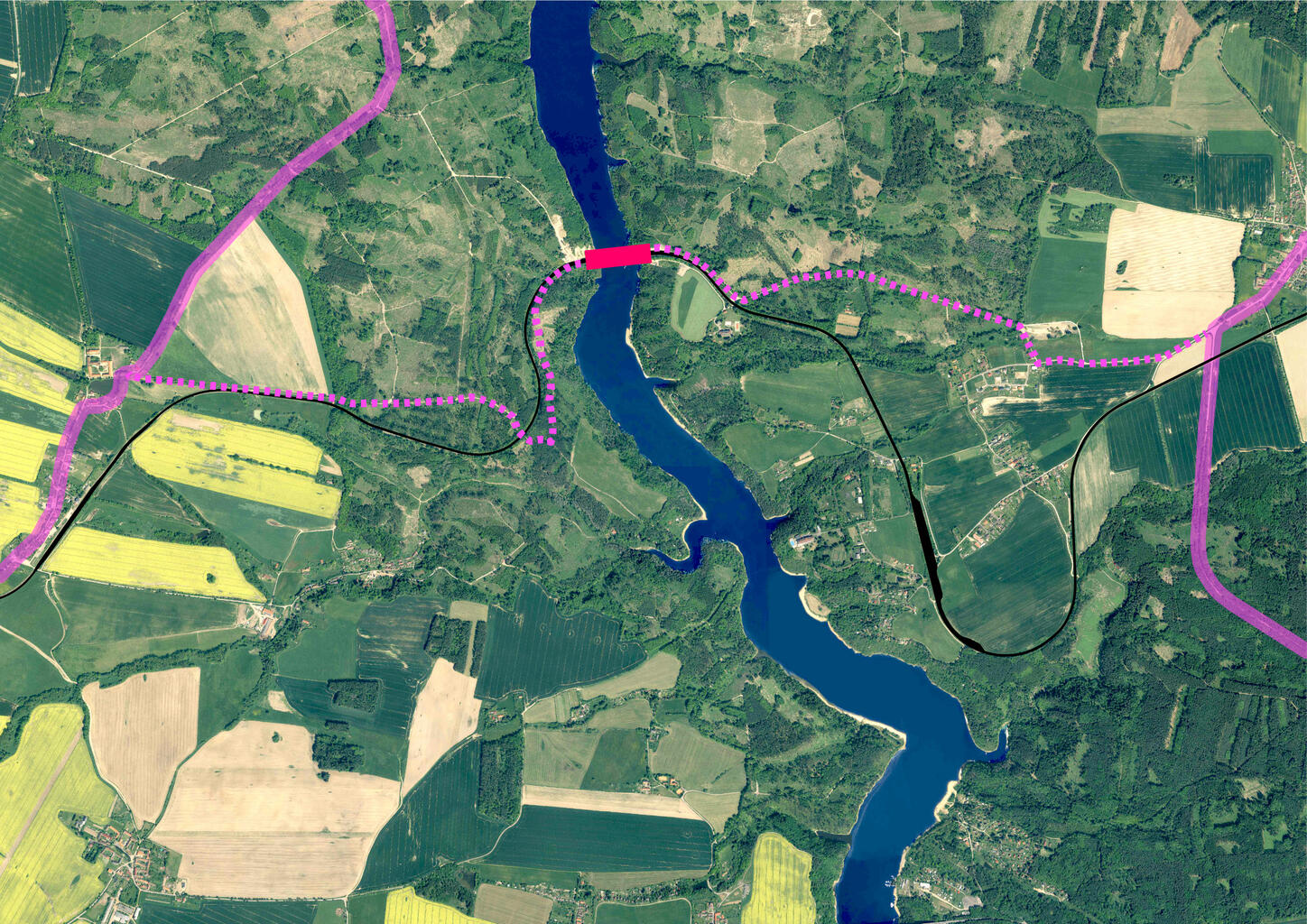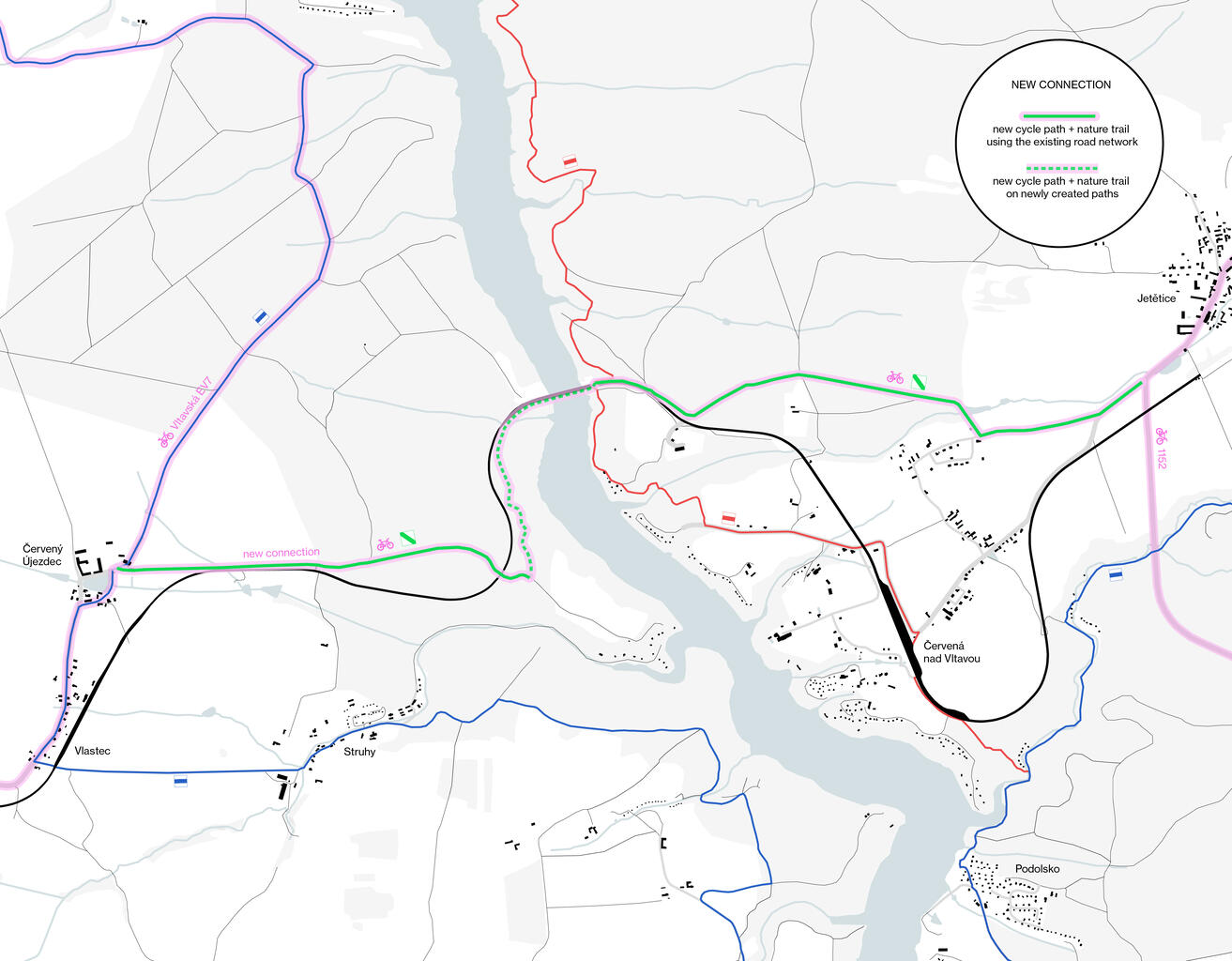- Project InitiatorViadukt, association
- PartnersSpráva železnic, University of South Bohemia, Association of Municipalities of Milevsko, agps architecture, Centre for Central European Architecture
- LocationHistoric Railway Bridge, Červená nad Vltavou
- Expected Opening Date2028
OLD BRIDGE – NEW CONNECTION
A Unique Gateway to Nature, History & Discovery
This project focuses on revitalizing the historic railway bridge over Orlík near Červená nad Vltavou, transforming it into an educational and recreational center. Built in 1889, the riveted steel bridge is a significant Austro-Hungarian technical monument. Its railway function ended in 2024 with the opening of the new Schwarzenberg Bridge. Thanks to the initiative of local residents and the Ministry of Culture of the Czech Republic, the bridge has been preserved as a cultural heritage site. It is set to be transferred to the Viadukt association under a future agreement. This will allow its adaptation into a unique new destination.
The project presents an innovative approach to repurposing industrial heritage within the landscape. It merges a historic technical structure with modern sustainability principles, community engagement, and environmental education. The bridge will become a key point on regional tourist routes, offering a novel way to interact with the Orlík Reservoir’s landscape. Its transformation will integrate technical history with cycling and hiking tourism, education, and ecological awareness into a cohesive concept.
This initiative will establish a new tourist destination that promotes sustainable mobility. It will link pedestrian and cycling routes across the Orlík Reservoir with a direct connection to the Vltava Cycle Route (EuroVelo 7). The former railway track will be converted into a public space featuring rest areas, scenic viewpoints, and cyclist-friendly infrastructure. The bridge’s structure will also house an educational and recreational center focused on local biodiversity.
The revitalization will adhere to sustainable and ecological principles, providing visitor facilities, educational spaces, accommodations, and refreshments. The project will implement the Nature-Inclusive Design approach, seamlessly integrating architecture with the surrounding ecosystem.
